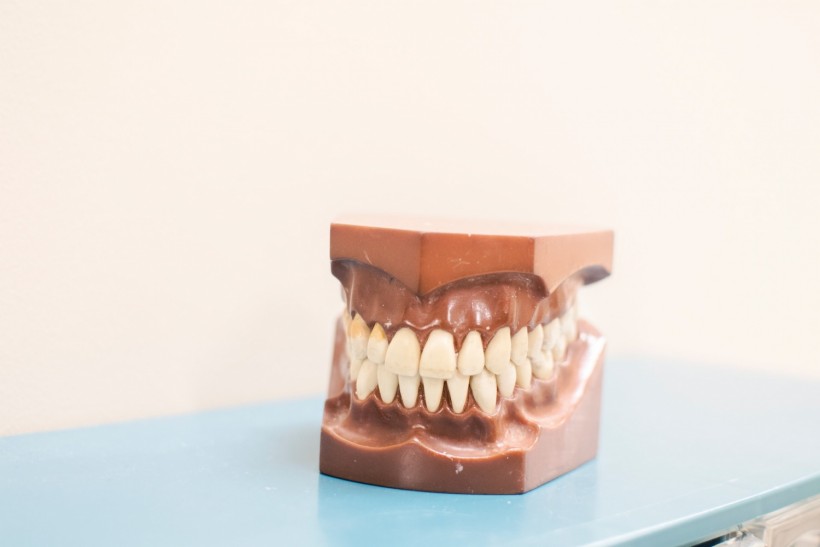The ability to bite, eat, and talk clearly is impossible without teeth. They are magnificent structures that help us look good and are essential to our dental health.
Do you ever wonder what your teeth are constructed from? Knowing the composition of teeth may shed light on their resilience, sensitivity, and the need for good oral hygiene.
I talked to my Clifton general dentist who explained that teeth, behind their glossy appearance, are made up of several different layers and tissues. In this article, we'll investigate the interesting makeup of teeth, dissecting the complex structure and individual components that make up these vital organs.
Enamel: The Outer Protective Layer
Enamel protects our teeth and is stronger than bone. Hydroxyapatite, a crystalline calcium phosphate, is the mineral that makes up the bulk of enamel. These hydroxyapatite crystals are thick and strong. Enamel comprises hydroxyapatite, water, and organic substances.
Enamel contains 96% minerals and its mineralization makes it strong enough to endure biting and chewing pressures. Enamel's thick hydroxyapatite crystals protect the tooth's underlying layers from wear and deterioration.
It protects the tooth's inner layers from physical and chemical harm. It protects against acids, bacteria, and plaque that cause cavities. Plaque doesn't stick to enamel, making dental hygiene easy.
Citrus, drinks, and other acidic meals may destroy enamel and acidic erosion damages it, increasing tooth decay and sensitivity. Enamel and tooth health depend on good oral hygiene, a balanced diet, and frequent dental treatment.
Dentin: The Supportive Layer
Dentin supports our teeth behind the thick enamel and keeps teeth strong and sensitive. Dentin is hard, thick, and calcified. Mineralized connective tissue, water, and organic matter make up this structure. Dentin, unlike enamel, has living cells called odontoblasts that create it throughout life.
Dentin is yellowish and less thick than enamel. It is softer than enamel but firmer than other mouth tissues. Dentin is sensitive due to minute tubules. Dentin becomes sensitive to warmth, touch, and some chemicals as the enamel wears down or erodes.
It cushions the tooth pulp from external stimulation. Dentin distributes chewing and biting forces, preventing pulp damage and fractures.
Enamel erosion, gum recession, and tooth wear may expose dentin, causing dental sensitivity. The exposed dentin lets hot or cold temperatures, sweets, or air access the tubule nerves, producing discomfort or agony. Good oral care, desensitizing toothpaste, and dental treatment may reduce dentin sensitivity.
Pulp: The Vital Core
The pulp, the living tissue at the tooth's center, is buried deep inside the tooth, under the dentin and enamel. A tooth's growth, sustenance, and sensitivity are all dependent on the dental pulp, a soft, living tissue that comprises blood vessels, nerves, and connective tissue.
The pulp chamber contains the dental pulp and runs the length of the tooth from the crown to the roots. The pulp chamber is located in the crown, and from there, small pulp canals go down to the roots. Dentin serves as a barrier, keeping harmful bacteria out of the pulp chamber and canals.
There are many nerve fibers and blood arteries in the tooth pulp. The pulp is kept healthy and strong by the oxygen, nutrients, and immune cells carried to it by the blood vessels. Our ability to feel things like pain, pressure, and temperature is made possible by the sensory innervation of the tooth by nerve fibers.
Cementum: Anchoring the Tooth
Cementum, a special kind of dental tissue, is crucial in securing the tooth to the jaw. It protects the tooth's pulp and serves as a mooring for the periodontal ligament, which in turn helps keep the tooth firmly seated in the jaw.
Cementum is a kind of mineralized connective tissue that is structurally very similar to bone. Collagen strands that have been mineralized provide its strength and durability. Cementum, in contrast to dentin and enamel, does not have any nerves or blood arteries.
From the enamel at the crown to the root tips, cementum covers the whole root surface of the tooth. Its primary role is to provide support and stability by anchoring the tooth to the alveolar bone in the jaw.
Periodontal Ligament: Supporting the Tooth in the Socket
The periodontal ligament (PDL) is a kind of connective tissue found in the jaw that wraps around the tooth root and anchors it to the alveolar bone. Providing stability, cushioning, and the capacity to endure pressures produced during biting and chewing, it plays a critical function in supporting and suspending the tooth inside its socket.
A complex network of collagen fibers, blood arteries, nerve terminals, and biological components make up the periodontal ligament. It is made up of fibroblasts, which create and maintain collagen fibers, and other cells that aid in ligament repair and remodeling.
Final Words
Teeth are remarkable structures composed of multiple tissues that work together to perform essential functions in our oral health and overall well-being. Understanding what teeth are made of provides us with insights into their unique properties, functions, and vulnerabilities.
Maintaining good oral hygiene practices, such as regular brushing, flossing, and dental check-ups, is vital for preserving the health of teeth and their supporting structures. Protecting enamel, preventing dentin exposure, caring for the dental pulp, and supporting the periodontal ligament contribute to overall oral health.
By understanding the composition and functions of teeth, we can appreciate the complexity and importance of maintaining these remarkable structures. Proper oral care and seeking professional dental treatment when needed are key to preserving the strength, functionality, and longevity of our teeth, enabling us to enjoy a healthy and confident smile.
* This is a contributed article and this content does not necessarily represent the views of sciencetimes.com















